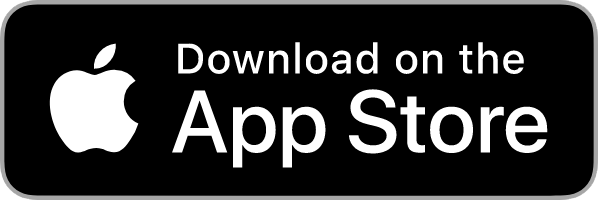After a year’s worth of rumors and speculation, the iPhone 12 is finally here. Apple unveiled the highly anticipated iPhone 12 lineup at its October 2020 virtual launch event. The iPhone 12 release date is scheduled for October 23, with preorders starting on October 16.
This year, Apple is launching four different iPhone models: the 6.7-inch iPhone 12 Pro Max, the 6.1-inch iPhone 12 and iPhone 12 Pro, and the all-new 5.4-inch iPhone 12 mini. This article will cover the iPhone 12, Apple’s new mainstream iPhone. Keep reading to learn more about the iPhone 12 — and stay tuned to the Swappa Blog for more content covering the rest of the iPhone 12 family in the coming days.
This iPhone 12 overview is part of our larger series on the iPhone 12 family. Learn more about the iPhone 12 lineup by visiting our iPhone 12 mini, iPhone 12 Pro, and iPhone 12 Pro Max overviews.
Table of Contents:
- Hardware Specs
- Industrial Design
- Camera
- Display
- Battery and Charging
- Water Resistance
- Is iPhone 12 worth it?
iPhone 12 specifications
The iPhone 12 is all about speed. This means that whichever iPhone 12 variant you choose, you’ll get an A14 Bionic chip and 5G wireless connectivity. Every iPhone 12 model also packs a high-resolution Super Retina XDR OLED screen with True Tone, vibrant colors, Dolby Vision HDR support, and more.
| iPhone 12 mini | iPhone 12 | iPhone 12 Pro | iPhone 12 Pro Max | |
|---|---|---|---|---|
| Processor | ||||
| Display | 5.4-inch OLED | 6.1-inch OLED | 6.1-inch OLED | 6.7-inch OLED |
| Resolution | 1080 x 2340 (476 ppi) | 1170 x 2532 (460 ppi) | 1170 x 2532 (460 ppi) | 1284 x 2778 (458 ppi) |
| Cameras | Ultrawide: 12MP sensor with 13mm, f/2.4 lens and 120-degree FOV Wide-angle: 12MP (1.4μm pixels) sensor with 26mm, f/1.6 lens and OIS | Ultrawide: 12MP sensor with 13mm, f/2.4 lens and 120-degree FOV Wide-angle: 12MP sensor (1.4μm pixels) with 26mm, f/1.6 lens and OIS | Ultrawide: 12MP sensor with 13mm, f/2.4 lens and 120-degree FOV Wide-angle: 12MP sensor (1.4μm pixels) with 26mm, f/1.6 lens and OIS Telephoto: 12MP sensor (1.0μm pixels) with 52mm, f/2.0 lens (4x optical zoom) and OIS | Ultrawide: 12MP sensor with 13mm, f/2.4 lens and 120-degree FOV Wide-angle: 12MP sensor (large 1.7μm pixels) with 26mm, f/1.6 lens and Sensor-Shift OIS Telephoto: 12MP sensor (1.0μm pixels) with 65mm, f/2.2 lens (5x optical zoom) and OIS |
| Storage | 64GB, 128GB, 256GB | 64GB, 128GB, 256GB | 128GB, 256GB, 512GB | 128GB, 256GB, 512GB | Battery | 15 hours video playback | 17 hours video playback | 17 hours video playback | 20 hours video playback |
| Dimensions | 131.5 x 64.2 x 7.4mm | 146.7 x 71.5 x 7.4 mm | 146.7 x 71.5 x 7.4 mm | 160.8 x 78.1 x 7.4 mm |
| Weight | 135g | 164g | 189g | 228g |
| Water Resistance | ||||
| Release Date | November 13, 2020 | October 23, 2020 | October 23, 2020 | November 13, 2020 |
| MSRP | Starts at $699 | Starts at $799 | Starts at $999 | Starts at $1099 |
A14 Bionic chip
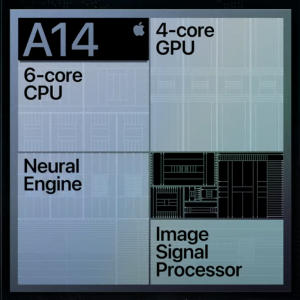
The entire iPhone 12 family packs Apple’s very latest A14 Bionic chip with Neural Engine. This is the fastest processor ever seen in a smartphone, improving on the A13 Bionic in last year’s iPhones by 20% on average and up to 50% in certain workloads.
The A14 Bionic processor is made up of six CPU cores, four GPU cores, 16 machine learning cores, and an image signal processing core. The A14 contains two high-speed CPU cores to handle intense workloads and four power-saving cores for simpler tasks. These CPU cores work in tandem with the GPU cores, ISP, and ML cores to make the iPhone 12 experience snappy and lag-free. This means console-quality gaming, fast multitasking, and more. The A14 Bionic also enables impressive new iPhone 12 features for photography and videography — but more on that below.
The A14 Bionic is the very first mobile processor built on TSMC’s brand new 5nm lithographic process technology. This node shrink means that Apple and TSMC are able to cram a whopping 11.8 billion transistors into a smaller space, resulting in a processor that’s not only faster, but also more energy-efficient.
5G wireless connectivity
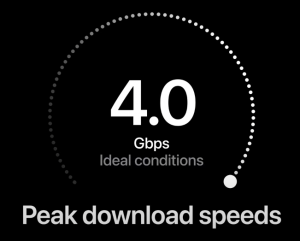
Speed isn’t just about on-device processing power. Wireless connectivity plays a huge role in determining how snappy your phone feels overall. To make the iPhone 12 faster than ever, Apple is bringing 5G wireless connectivity to all iPhone 12 models. Thanks to 5G’s lower latency, increased bandwidth, and increased network capacity; you’ll be able to browse the web, teleconference, stream video, and play online games faster than ever before.
The iPhone 12 doesn’t just bring 5G to the mainstream; it also supports the most 5G bands of any smartphone – including Verizon’s 5G Ultra Wideband built on mmWave spectrum. This means that regardless of carrier, 5G on the iPhone 12 will be faster and work in more places than ever before.
But what about those times you don’t need 5G? Rather than draining your battery, the iPhone 12 intelligently switches between 4G and 5G as needed. Smart Data Mode makes it so you get 5G performance when you need it and 4G LTE battery life when you don’t.
iPhone 12 design
The entire iPhone 12 family represents the first major evolution to the iPhone’s industrial design since the iPhone X debuted back in 2017. Just like the last three iPhone generations, the iPhone 12 prominently features a notched display to make room for the sensors required by Apple’s Face ID authentication. But this time around, the screen is flanked by smooth, flat edges that combine form and function by serving as the phone’s wireless antennas and allowing the front and rear glass to mount flush.
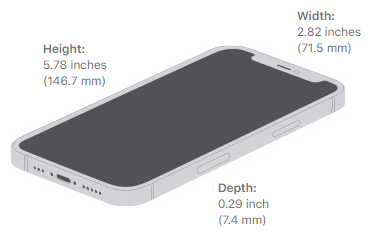
iPhone 12 size
Coming in at 146.7 x 71.5 x 7.4 mm (5.78 x 2.81 x 0.29 in), the iPhone 12 dimensions are somewhat small overall. Despite its mid-sized frame, the iPhone 12 is able to pack a large, 6.1-inch display into a form factor that’s considerably smaller than last year’s iPhone 11. As a result, the iPhone 12’ thinner bezels yield an impressively high 86% screen-to-body ratio.
iPhone 12 colors
The iPhone 12 is available in five colors: Black, White, (Product)RED, Green, and Blue. Your choice in color affects not only the rear of the device, but also the physical buttons on the side of the device. Unfortunately, we miss out on the iPhone 11’s more playful colors, Yellow and Purple.
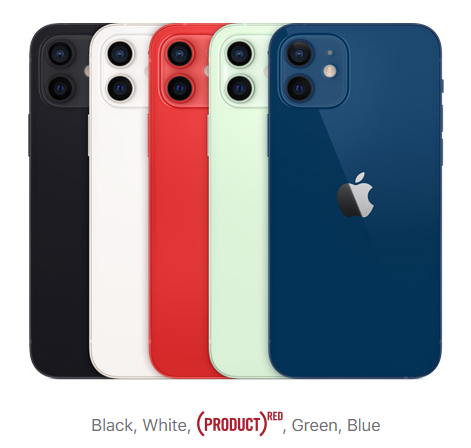
iPhone 12 camera
Apple iPhone cameras have historically delivered class-leading photo and video quality – the iPhone 12 is no different. The iPhone 12 and 12 mini offer the most advanced camera hardware and software of any mainstream phone currently available.
The iPhone 12 and iPhone 12 mini feature dual-12MP camera modules that cover ultrawide and wide-angle focal lengths. The ultrawide camera is paired with a five-element 13mm, f/2.4 lens with a 120-degree field of view; and the wide-angle camera is mated to a seven-element 26mm, f/1.6 lens with optical image stabilization.
Computational photography
Both cameras on the iPhone 12 and 12 mini are compatible with the entire gamut of Apple’s computational photography toolbox. Regardless of which camera module suits your photography better, you’ll be able to use Portrait Mode with Advanced Bokeh and Depth Control, Portrait Lighting, Deep Fusion with Night Mode, Night Mode Time-Lapse, and Smart HDR 3. In addition, the powerful camera software also performs automatic lens correction when shooting with the ultrawide camera to eliminate fish-eye distortion. Learn more about all these new computational photography features and more in our best iPhone camera roundup.

iPhone 12 video
The iPhone 12 is able to capture impressive 4k video at 24, 30, or 60 fps. It supports HDR with Dolby Vision at up to 30 fps. The iPhone 12 offers optical image stabilization when using the wide-angle lens, and is able to perform software-based cinematic video stabilization on both camera modules.
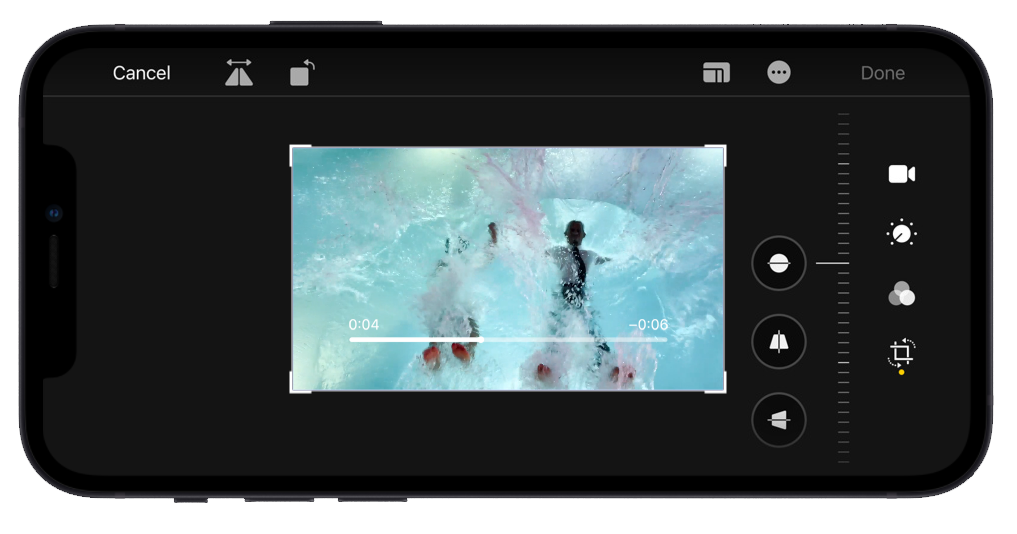
iPhone 12 display
An amazing phone is no good if it doesn’t have a great screen. Thankfully, the iPhone 12 display is one of the best available at any price range. The iPhone 12 screen size is 6.1 inches. The large Super Retina XDR is based on OLED technology, and it has a high resolution of 1170 x 2523 at 460 pixels-per-inch for outstandingly sharp text and images. The screen fully supports true HDR with 1200 nits peak brightness and a 2,000,000:1 contrast ratio. Because of this, the iPhone 12 display can handle HDR video playback through Dolby Vision, HDR10, and HLG standards.
The iPhone 12’s display isn’t just a looker – it’s also extremely durable. Thanks to an engineering collaboration with Corning, the iPhone 12 family features a new type of glass called Ceramic Shield. This innovative material goes beyond traditional hardened glass through the use of a high-temperature crystallization step that grows nanoceramic crystals within the glass matrix to improve overall toughness. This makes the iPhone 12’s Ceramic Shield four times as durable as previous iPhones in drop tests.
iPhone 12 battery life and charging
The iPhone 12 offers a number of improvements aimed at increasing battery life. For starters, the iPhone 12 is powered by the A14 Bionic chip, the first mobile processor to be built on TSMC’s brand new 5nm process technology. Because of this, the A14 is faster and more energy-efficient than anything else on the market.
The iPhone 12’s Super Retina XDR display also consumes less power than the iPhone 11’s Liquid Retina HD. This is because the iPhone 12’s screen is built on OLED panel technology rather than LCD, so it only lights up pixels when necessary. In other words, when displaying dark backgrounds or images, the iPhone 12 display barely uses any power at all.
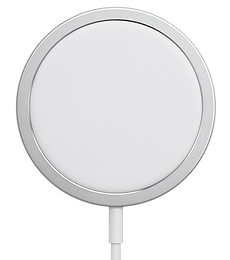
All this amounts to up to an increase in device runtime compared to the iPhone 11. The iPhone 12 is officially rated at up to 17 hours of local video playback, 11 hours of streaming video playback, and 65 hours of audio playback.
MagSafe wireless charging
In addition to improving battery runtime, the iPhone 12 also changes the way you top up. MagSafe Wireless Charging uses a magnet array to automatically align compatible wireless chargers and accessories to the back of your iPhone 12. And thanks to the improved alignment, MagSafe is able to charge at up to 15W while retaining backward compatibility with the older 5W Qi Wireless Charging standard.
Is the iPhone 12 waterproof?
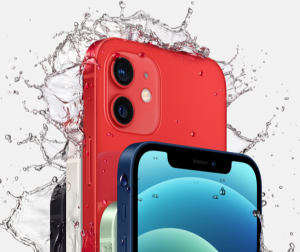
Although no phone is truly waterproof, all modern iPhones offer some degree of water resistance. The iPhone 12 lineup offers the highest level of water resistance yet, with a rating of IP68 under IEC standard 60529. This means it is fully dustproof and able to withstand submersion at a maximum depth of 6 meters for up to 30 minutes.
Although the iPhone 12 is IP68 certified, it does not offer protection against powerful or high-temperature water jets, so don’t take it in the shower or go swimming with it. But if it happens to get splashed or fall in the sink, you should be fine.
Is the iPhone 12 worth it?
The iPhone 12 is a technological powerhouse, and it’s certainly the right phone for a lot of people. But starting at $799 for 64GB and $949 for 256GB when buying direct from Apple, the iPhone 12 isn’t cheap. Luckily, used iPhone 12 prices are lower than they’ve ever been, making it a great time to buy!
Let’s take a look at your options to help you save on your iPhone 12 upgrade:
‣ Sell your old phone to help fund your upgrade
We’ve shown time and time again that Swappa is the best place to sell your iPhone for the most money. And the sooner you sell, the more money you’ll make. So what are you waiting for? Get the most for your used tech by selling on Swappa today!
‣ Wait a few weeks to pick up a newish iPhone 12 on Swappa
If you’re sure you want an iPhone 12, don’t preorder. Instead, consider buying a gently used iPhone 12 on Swappa once they start popping up in a few weeks. New releases generally start making their way to Swappa just a few days after launch, and you can often save hundreds by buying from our safe and easy-to-use marketplace. Learn more about carrier compatibility in our Unlocked iPhone 12 Carrier Compatibility Guide.
‣ Pick up a gently used iPhone Xs for less than half the price
Let’s face it — not everyone needs an A14 processor or 5G connectivity. Chances are that if you’re not a hardcore mobile gamer, you’ll hardly notice the difference between the A12 Bionic in the iPhone Xs and the A14 Bionic in the iPhone 12. And since 5G networks are still in their infancy, you won’t miss much on the wireless front either.
Instead of paying $799 to $949 for an iPhone 12, consider picking up an iPhone Xs for less than half the price. You’ll get a similar screen, a fast processor, and Apple’s innovative gesture-driven UI for less than half the price of an iPhone 12. Learn more on our iPhone 12 vs iPhone Xs Comparison page.
Snag the best deals on used iPhones wherever you go. Download the Swappa App today!


